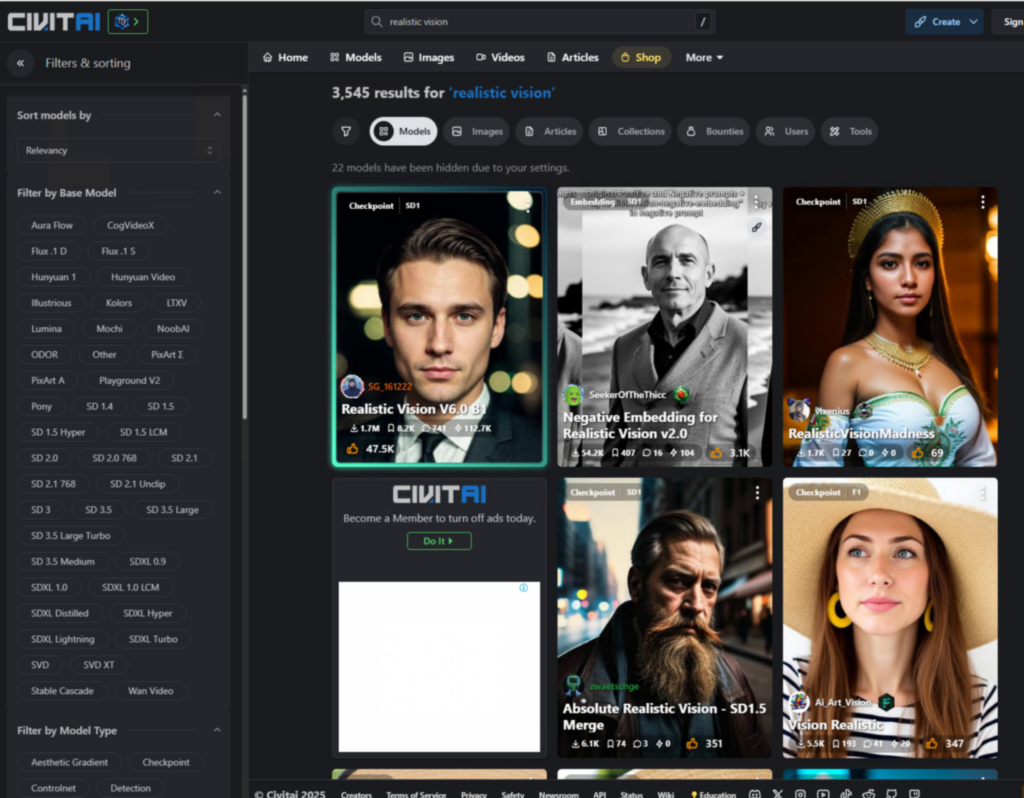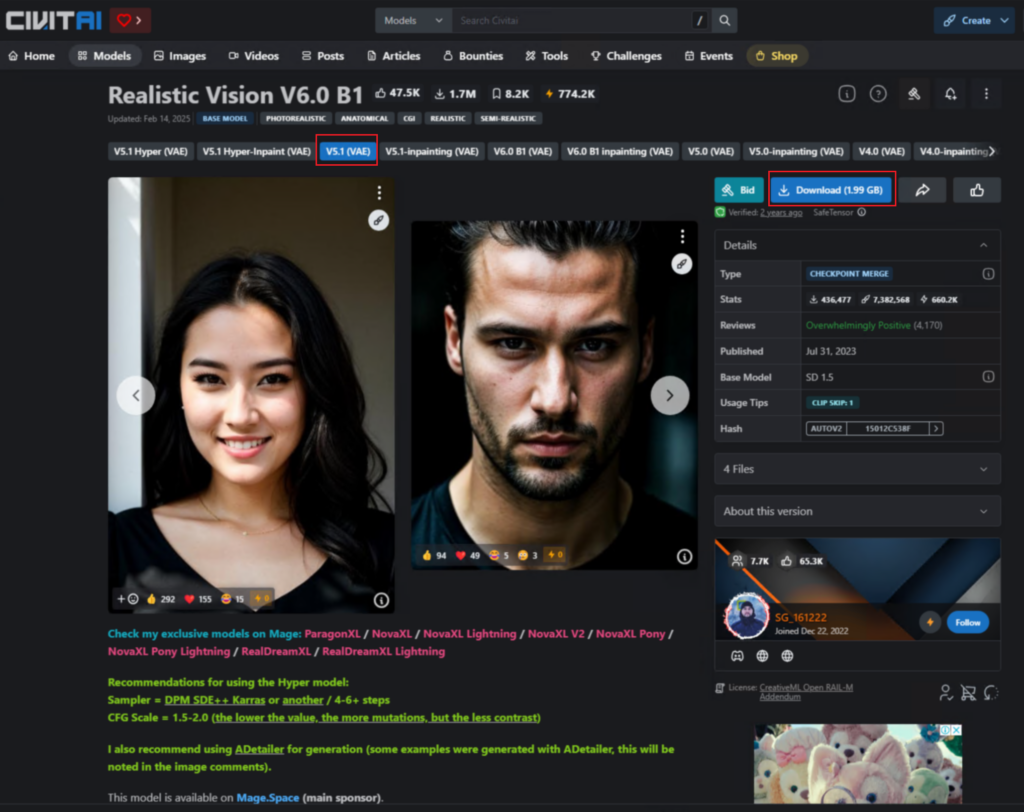Stable Diffusion is a powerful tool for generating AI-generated images, but the quality of results heavily depends on the model checkpoint used. In this guide, we’ll walk you through selecting, downloading, and installing refined model checkpoints to improve image generation results. We’ll also explore popular platforms for finding these models, such as HuggingFace and CivitAI.
Why Model Checkpoints Matter
The base model of Stable Diffusion, such as version 1.5, serves as a foundation for AI image generation. However, these base models often produce generic or unrealistic outputs. For example, generating a “a beautiful 16 years old girl with perfect face, movie star” using the base model may result in an image that looks artificial and unconvincing.
Refined model checkpoints, created by users and developers worldwide, enhance these base models to deliver more realistic and high-quality results. By choosing the right checkpoint, you can significantly improve the realism and accuracy of your generated images.
Where to Find Refined Model Checkpoints
There are several platforms where you can explore and download refined model checkpoints:
1. HuggingFace
HuggingFace is an open-source-inspired platform that hosts a wide variety of models. It’s similar to GitHub, providing access to model cards and other resources based on developers’ contributions. While HuggingFace is a great starting point, its interface can be less user-friendly, and some models may not be available here.
Visit HuggingFace Models to browse available checkpoints.

2. CivitAI
CivitAI is a more commercial platform with a broader selection of models. Its interface is more intuitive, making it easier to search and download refined models. For example, searching for “Realistic Vision” will bring up multiple versions of this popular checkpoint.
Visit CivitAI to explore refined models.

Step-by-Step Guide to Installing a Model Checkpoint
Follow these steps to download and install a refined model checkpoint:
1. Search for Your Desired Model
On CivitAI, search for a model like “Realistic Vision.” For this example, we’ll select version 5.1 with the VAE included.

2. Download the Model File
Once you’ve selected a version, download the .safetensors file. Note that these files can be large (e.g., 4 GB), so ensure you have sufficient storage and bandwidth.

3. Locate Your Software Directory
Navigate to your software folder where Stable Diffusion is installed. Within this folder, locate the models/checkpoints directory.
4. Copy the Model File
Copy the downloaded .safetensors file (e.g., realisticVisionV60B1_v51VAE.safetensors) into the models/checkpoints directory.
5. Restart ComfyUI
After copying the file, restart ComfyUI to load the new checkpoint. This ensures the software recognizes the newly installed model.
6. Load the Model in ComfyUI
In ComfyUI, use the “Load Checkpoint” node to select the new model. For example, choose realisticVisionV60B1_v51VAE

Comparing Results: Base Model vs. Refined Model
Using the refined model (e.g., Realistic Vision V5.1) often produces significantly better results compared to the base model. Without changing the seed or prompt, the refined checkpoint enhances realism and quality.
Additionally, refined models often include features like progress bars and advanced node packs (e.g., rgthree node pack), which improve workflow efficiency and visualization during image generation.
My prompt: a beautiful 16 years old girl with perfect face, movie star
Refined Model:

Base Model:

Next Steps: Fine-Tuning Parameters
While changing the model checkpoint is a significant step, further improvements can be achieved by adjusting sampler parameters. Later in this course, we’ll explore how to fine-tune these settings to optimize image quality and realism.
Conclusion
Choosing the right model checkpoint is crucial for achieving high-quality AI-generated images. Platforms like HuggingFace and CivitAI provide access to a wide range of refined models, enabling you to experiment and find the best fit for your projects. By following the steps outlined above, you can seamlessly integrate refined checkpoints into your workflow and unlock the full potential of Stable Diffusion.